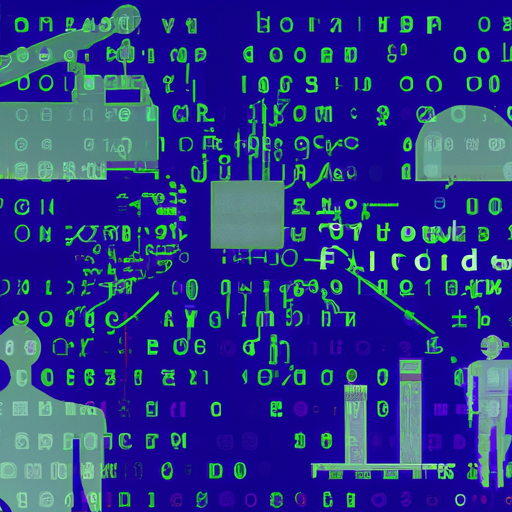-
Table of Contents
“Unlock the Possibilities of the Future of Commerce and Retail: Embrace E-Commerce and Omnichannel Retail”
Introduction
The future of commerce and retail is an exciting and rapidly evolving space. With the rise of e-commerce and omnichannel retail, businesses are now able to reach customers in ways that were previously unimaginable. Consumers are now able to shop from the comfort of their own homes, and businesses are able to reach customers in new and innovative ways. As technology continues to evolve, so too will the way we shop and the way businesses interact with their customers. In this article, we will explore the future of commerce and retail, including e-commerce and omnichannel retail, and how these technologies are changing the way we shop.
How AI and Machine Learning are Transforming the Future of E-Commerce
The advent of artificial intelligence (AI) and machine learning (ML) has revolutionized the e-commerce industry. AI and ML are transforming the way businesses interact with customers, manage inventory, and optimize operations. By leveraging these technologies, e-commerce companies can gain a competitive edge and provide customers with a more personalized shopping experience.
AI and ML are used to automate processes, such as product recommendations, customer segmentation, and inventory management. AI-powered algorithms can analyze customer data to identify patterns and trends, allowing businesses to better understand their customers and tailor their offerings accordingly. AI and ML can also be used to automate pricing decisions, helping businesses to maximize profits while still providing customers with competitive prices.
In addition, AI and ML can be used to improve customer service. AI-powered chatbots can provide customers with quick and accurate answers to their questions, while ML-powered sentiment analysis can help businesses identify customer sentiment and respond accordingly. AI and ML can also be used to detect fraud and protect customers from malicious actors.
Finally, AI and ML can be used to optimize operations. AI-powered algorithms can be used to automate tasks such as order fulfillment and inventory management, allowing businesses to reduce costs and improve efficiency. AI and ML can also be used to analyze customer data to identify opportunities for improvement, such as new product offerings or marketing strategies.
The combination of AI and ML is transforming the e-commerce industry, allowing businesses to gain a competitive edge and provide customers with a more personalized shopping experience. By leveraging these technologies, businesses can automate processes, improve customer service, and optimize operations. As AI and ML continue to evolve, the possibilities for e-commerce are endless.
The Impact of 5G on the Future of Omnichannel Retail
The introduction of 5G technology is set to revolutionize the retail industry, ushering in a new era of omnichannel retail. 5G technology is expected to provide faster speeds, lower latency, and improved reliability, allowing retailers to offer customers a more seamless shopping experience. This technology will enable retailers to provide customers with a more personalized shopping experience, as well as improved customer service. Additionally, 5G technology will enable retailers to better manage inventory, reduce costs, and increase efficiency.
The increased speed and reliability of 5G technology will allow retailers to offer customers a more seamless shopping experience. Customers will be able to shop from any device, at any time, and from any location. This will enable customers to shop from their mobile devices, as well as from their desktop computers. Additionally, 5G technology will enable retailers to offer customers a more personalized shopping experience, as they will be able to access customer data in real-time. This will allow retailers to tailor their offerings to the individual customer, providing them with a more personalized shopping experience.
5G technology will also enable retailers to better manage inventory. This technology will allow retailers to track inventory in real-time, allowing them to better manage stock levels and reduce costs. Additionally, 5G technology will enable retailers to better manage their supply chain, allowing them to reduce costs and increase efficiency.
Finally, 5G technology will enable retailers to offer customers improved customer service. This technology will allow retailers to provide customers with faster response times, as well as more accurate information. Additionally, 5G technology will enable retailers to offer customers more personalized customer service, as they will be able to access customer data in real-time.
In conclusion, the introduction of 5G technology is set to revolutionize the retail industry, ushering in a new era of omnichannel retail. This technology will enable retailers to provide customers with a more seamless shopping experience, as well as improved customer service. Additionally, 5G technology will enable retailers to better manage inventory, reduce costs, and increase efficiency. As such, 5G technology is set to have a significant impact on the future of omnichannel retail.
Exploring the Potential of Blockchain in the Future of Commerce
The potential of blockchain technology is immense and its implications for the future of commerce are far-reaching. Blockchain is a distributed ledger technology that enables secure, transparent, and immutable transactions. It is a decentralized system that allows for the secure transfer of digital assets without the need for a third-party intermediary.
Blockchain technology has the potential to revolutionize the way we conduct commerce. It can provide a secure and efficient platform for businesses to conduct transactions, store data, and manage contracts. It can also enable faster and more secure payments, reduce transaction costs, and provide greater transparency and trust between parties.
One of the most promising applications of blockchain technology is in the area of digital payments. Blockchain-based payments are secure, fast, and cost-effective. They can be used to facilitate payments between buyers and sellers, as well as to facilitate international payments. This could potentially reduce the cost of international payments and make them more accessible to businesses and consumers.
Another potential application of blockchain technology is in the area of smart contracts. Smart contracts are digital contracts that are stored on the blockchain and are automatically executed when certain conditions are met. This could be used to automate the execution of contracts, reducing the need for manual intervention and increasing the efficiency of the process.
Finally, blockchain technology could be used to create digital identities. This could be used to verify the identity of customers and ensure that they are who they say they are. This could be used to reduce fraud and increase trust between parties.
The potential of blockchain technology is immense and its implications for the future of commerce are far-reaching. It has the potential to revolutionize the way we conduct commerce, reduce transaction costs, and increase trust between parties. As the technology continues to evolve, it is likely that we will see more applications of blockchain technology in the future.
The Role of Augmented Reality in the Future of Retail Shopping Experiences
The retail industry is undergoing a major transformation, and augmented reality (AR) is playing a key role in this shift. AR is a technology that overlays digital content onto the physical world, allowing users to interact with virtual objects in a real-world environment. This technology has the potential to revolutionize the retail shopping experience, making it more immersive, engaging, and personalized.
One of the most exciting applications of AR in retail is the ability to virtually try on clothes. This technology allows customers to see how an item of clothing looks on them without having to physically try it on. This can be done through the use of 3D models, which can be manipulated to match the customer’s body shape and size. This eliminates the need for customers to visit a store to try on clothes, saving them time and money.
AR can also be used to create more immersive shopping experiences. For example, customers can use AR to virtually explore a store before they visit it. This allows them to get a better understanding of the layout of the store and the products that are available. Additionally, AR can be used to provide customers with more detailed product information, such as product reviews and ratings. This can help customers make more informed decisions when shopping.
Finally, AR can be used to personalize the shopping experience. For example, customers can use AR to create a virtual avatar that reflects their style and preferences. This avatar can then be used to recommend products that are tailored to the customer’s individual tastes. This can help customers find items that they are more likely to purchase, resulting in higher sales for retailers.
In conclusion, augmented reality has the potential to revolutionize the retail shopping experience. By allowing customers to virtually try on clothes, explore stores, and receive personalized product recommendations, AR can make shopping more immersive, engaging, and personalized. As this technology continues to evolve, it is likely to become an integral part of the retail industry in the future.
Conclusion
The future of commerce and retail is bright, with e-commerce and omnichannel retail continuing to grow and evolve. Consumers are increasingly looking for convenience, personalization, and a seamless shopping experience, and retailers are responding by investing in technology and creating innovative solutions to meet these needs. As technology continues to advance, the possibilities for commerce and retail are endless. With the right strategies and investments, retailers can create a competitive advantage and capitalize on the opportunities that the future of commerce and retail will bring.




